
A switcher, shunter, yard pilot, switch engine, yard goat, or shifter is a small railroad locomotive used for manoeuvring railroad cars inside a rail yard in a process known as switching (US) or shunting (UK). Switchers are not intended for moving trains over long distances but rather for assembling trains in order for another locomotive to take over. They do this in classification yards. Switchers may also make short transfer runs and even be the only motive power on branch lines and switching and terminal railroads. The term can also be used to describe the workers operating these engines or engaged in directing shunting operations. Switching locomotives may be purpose-built engines, but may also be downgraded main-line engines, or simply main-line engines assigned to switching. Switchers can also be used on short excursion train rides.
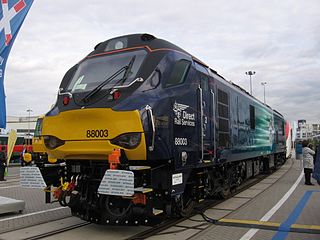
Direct Rail Services (DRS) is a rail freight company in Great Britain. It was created in 1994 by British Nuclear Fuels Ltd to take over British Rail's handling of nuclear material, and in 2005 transferred to the Nuclear Decommissioning Authority (NDA). It has since diversified into other freight operations and providing haulage for passenger services. DRS is one of seven publicly owned railway companies in the United Kingdom, the others being NI Railways, LNER, Northern Trains, Southeastern, Transport for Wales Rail and ScotRail.

The Somerset & Dorset Joint Railway, also known as the S&D, SDJR or S&DJR, was an English railway line connecting Bath and Bournemouth, with a branch from Evercreech Junction to Burnham-on-Sea and Bridgwater. Strictly speaking, the main line ran from Bath Junction to Broadstone, as the line between Broadstone and Bournemouth was owned by the London and South Western Railway, while the line between Bath Junction and Bath was owned by the Midland Railway.

The Selby rail crash was a high-speed train incident that occurred at Great Heck near Selby, North Yorkshire, England, on the morning of 28 February 2001. An InterCity 225 passenger train operated by Great North Eastern Railway (GNER) travelling from Newcastle to London collided with a Land Rover Defender which had crashed down a motorway embankment onto the railway line. It was consequently derailed into the path of an oncoming freight train, colliding at an estimated closing speed of 142 mph (229 km/h). Ten people were killed, including the drivers of both trains involved, and 82 were seriously injured. It remains the worst rail disaster of the 21st century in the United Kingdom.

The British Rail Class 76, also known as Class EM1, is a class of 1.5 kV DC, Bo+Bo electric locomotive designed for use on the now-closed Woodhead Line in Northern England.

The X class was a class of diesel locomotives built by English Electric for the Tasmanian Government Railways between 1950 and 1952. They were the first class of diesel locomotive to enter mainline service on a Government-owned railway in Australia.
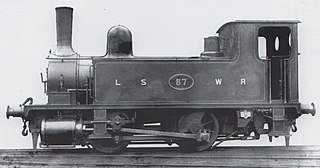
The London and South Western Railway B4 class was a class of 0-4-0 tank engines originally designed for station piloting and dock shunting. They were later used extensively in Southampton Docks for nearly half a century.

The LSWR S15 class is a British 2-cylinder 4-6-0 freight steam locomotive designed by Robert W. Urie, based on his H15 class and N15 class locomotives. The class had a complex build history, spanning several years of construction from 1920 to 1936. The first examples were constructed for the London and South Western Railway (LSWR), where they hauled freight trains to the south coast ports and further west to Exeter, as well as occasional passenger work in conjunction with their larger-wheeled N15 class counterparts.
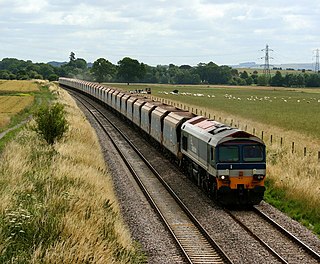
Mendip Rail Ltd is an independent freight operating railway company in Great Britain. It is a joint venture composed of the rail-operation divisions of Aggregate Industries and Hanson Aggregates.

Hamworthy railway station serves Hamworthy, an area of Poole in Dorset, England. It is 115 miles 77 chains (186.6 km) down the line from London Waterloo.
The Rewanui Branch, sometimes referred to as the Rewanui Incline and known as the Point Elizabeth Branch in its early years, was a branch line railway located in the West Coast region of New Zealand's South Island. It branched from the Midland Line near its western terminus in Greymouth and ran up to Rewanui in the Paparoa Ranges. The branch closed in 1985 but the first six kilometres to Runanga remain in operation as part of the Rapahoe Branch.

The Southampton and Dorchester Railway was an English railway company formed to join Southampton in Hampshire with Dorchester in Dorset, with hopes of forming part of a route from London to Exeter. It received Parliamentary authority in 1845 and opened in 1847. It was promoted by Charles Castleman of Wimborne Minster, and became known as Castleman's Corkscrew because of the meandering route it followed.

The British Rail Class 88 is a type of mainline mixed traffic electro-diesel locomotive manufactured by Stadler Rail for Direct Rail Services (DRS) in the United Kingdom. The locomotive is part of the Stadler Euro Dual family. It is the first dual-mode locomotive in the UK to use the 25 kV AC electrification.

The Knowle and Dorridge rail crash was a fatal rail crash that occurred at Dorridge railway station in the West Midlands, England, on 15 August 1963. Three people died in the crash after a signalman's error routed a small freight train into the path of an express passenger train which slowed but could not stop before colliding with it.
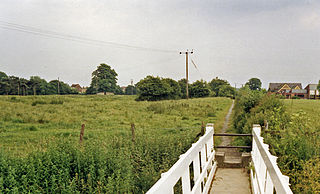
The Cawood, Wistow and Selby Light Railway (CW&SLR) was a short light railway in a rural part of Yorkshire, England. The company was sometimes referred to as the Cawood, Wistow and Selby Railway.
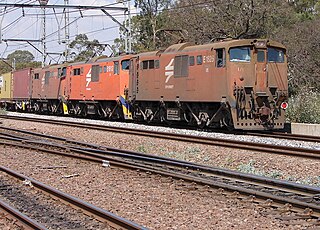
The Spoornet Class 17E of 1993 was a South African electric locomotive.

Knottingley TMD was a traction maintenance depot located in Knottingley, West Yorkshire, England. The depot was situated on the Pontefract Line and was near Knottingley station. It opened in 1967 to maintain the locomotives and hopper wagons for a planned 75 Merry-go-round trains a day, expected to use the Wakefield and Goole line.
Cawood was the northern terminus of the short Cawood, Wistow and Selby Light Railway (CW&SLR), in rural North Yorkshire, England. The line was connected to the North Eastern Railway (NER) at its southern end.
Wistow was the sole intermediate station of the short Cawood, Wistow and Selby Light Railway (CW&SLR), in rural North Yorkshire, England. The line was connected to the North Eastern Railway (NER) at its southern end.
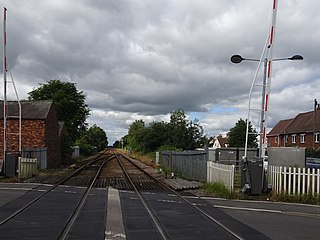
Selby was the initial, temporary southern terminus of the short Cawood, Wistow and Selby Light Railway (CW&SLR) in North Yorkshire, England. The line was connected to the North Eastern Railway (NER) nearby. The station is sometimes referred to as "Brayton Gates" or plain "Selby", though it was around a mile from the much larger Selby station.

















